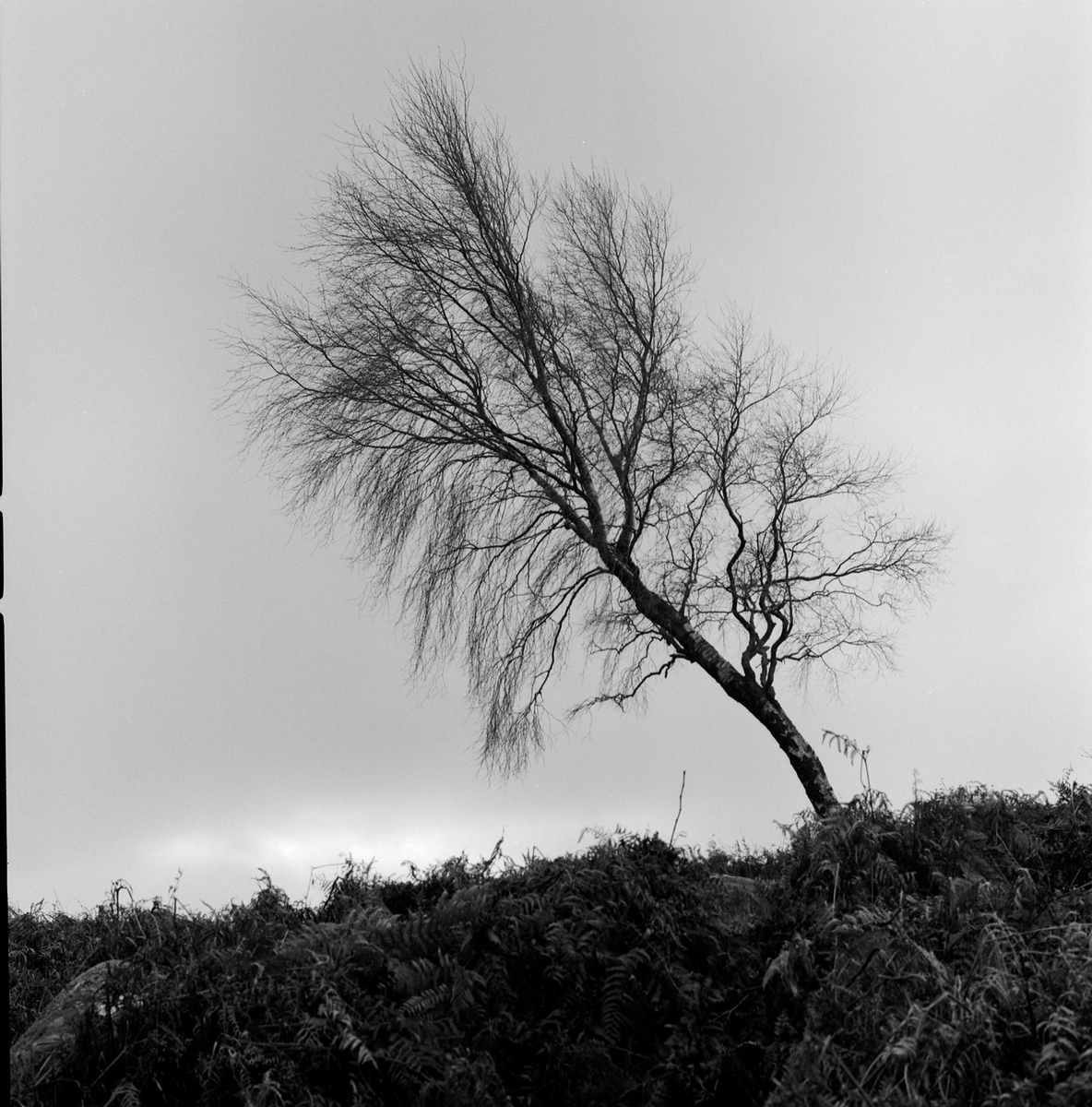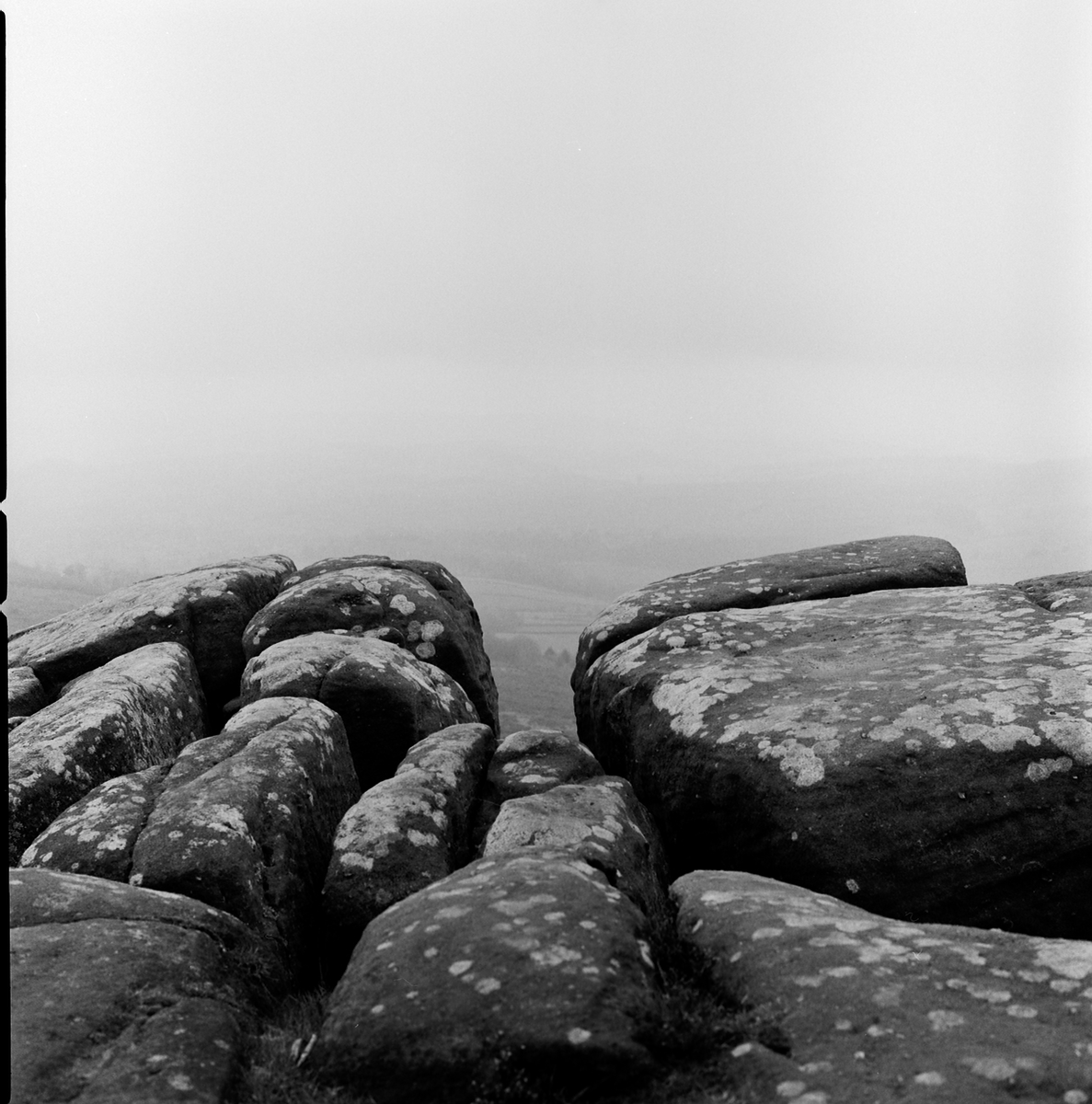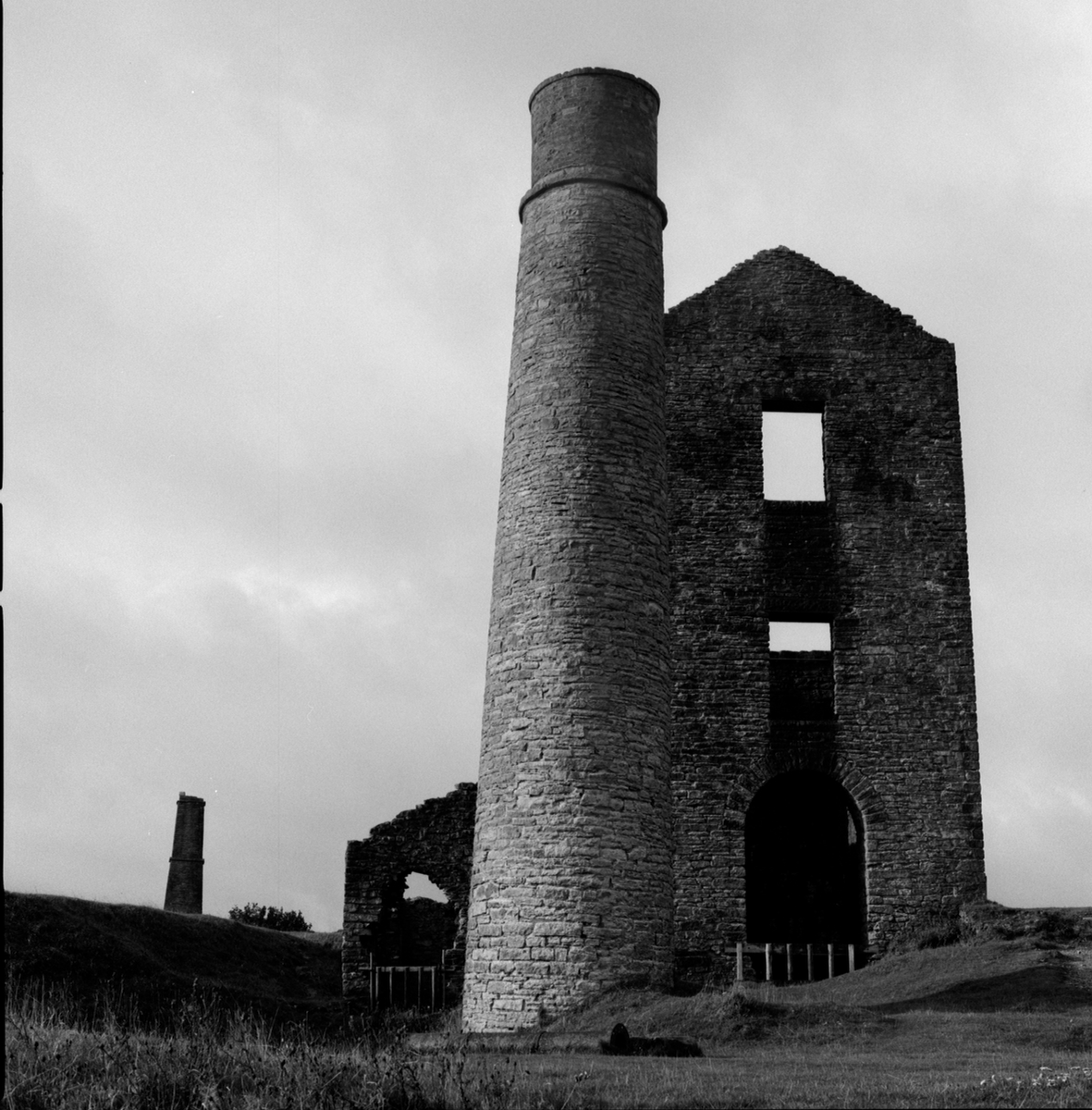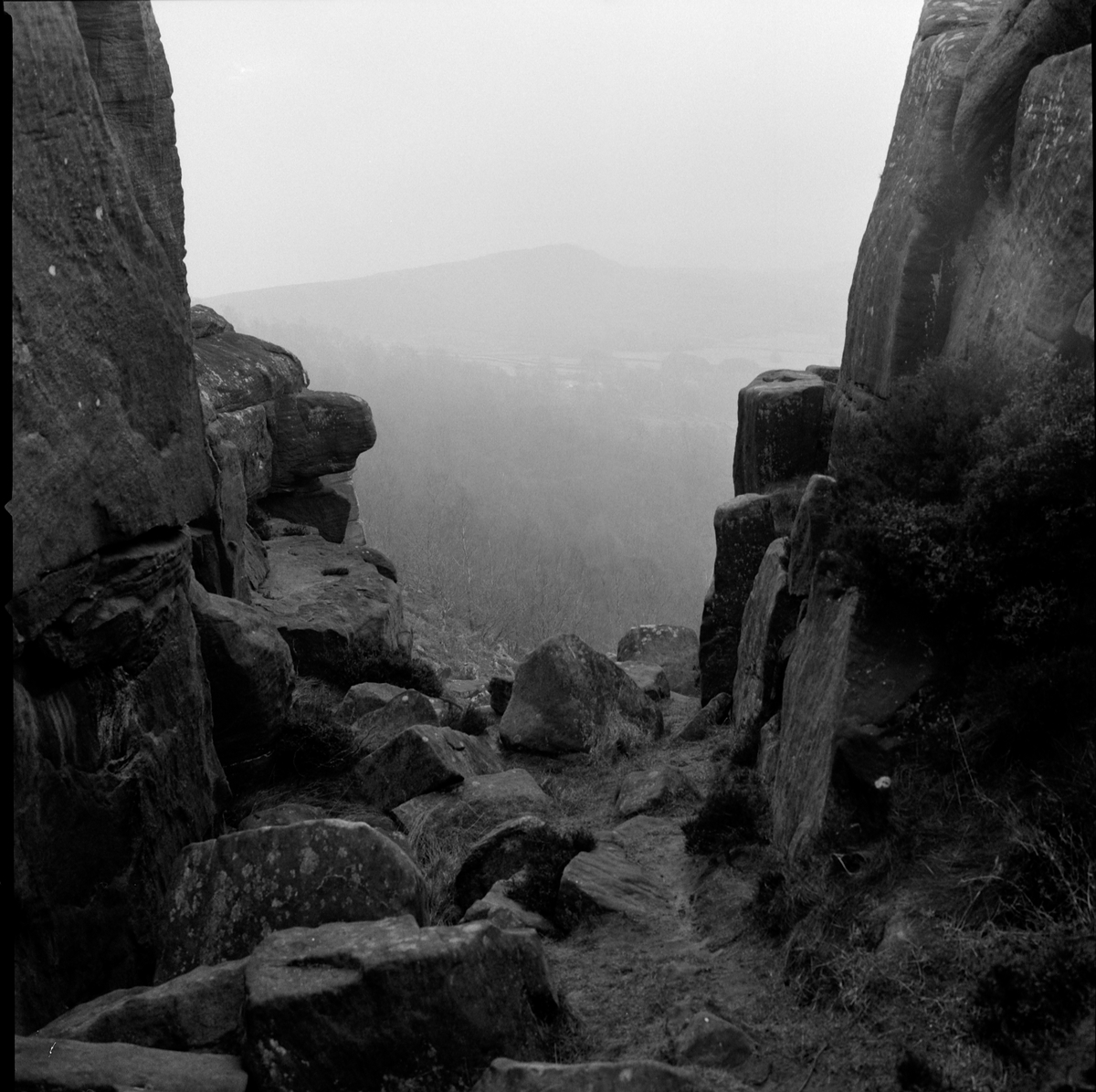The London Series Posted On 16th June 2020 To Magazine

Balance
Like many photographers these days, I balance a busy day job alongside a family life. I try to be good a community member, share my thoughts and experiences and sometimes, perhaps, inspire one or two. In the background I have long held an aspiration to become a successful professional photographer, something i'm still working towards.
Like all of us I suspect, finding something to focus on, photographically, can be a challenge when life is so busy. The majority of my casual photography currently, and for the last ten years or so, has centred around family life. Before that, it was canine photography as I had 3 rescued dogs for 16 years and previous to that, I was a fundless youngster. At the moment, without paying clients, I needed something to focus my photography passion on.
A series of night-time cityscape photographs of London on Delta 400 film
Back in late December 2018, a requirement of my day job was frequent travel to the centre of London. Often for a couple of days at a time, and often every week, or every other week. London, like most cities, looks just like any other capital city by day. Sure it has some impressive building and monuments, but at 13:00 on a summer day, it does not shout out to me to photograph it.
However, by night, it looks completely different, and really quite spectacular. So, I started thinking that I should take my camera with me when I go; if nothing else, it would make the trips more exciting! On one particular December day, I thought I would take my Hasselblad along with me as I had planned to meet a friend of mine and fellow Hasselblad shooter from luxcamera.co.uk one evening while I was there.
We had planned a quick photo walk and a coffee. I figured I might be able to get a good picture of the financial district at night during our walk.
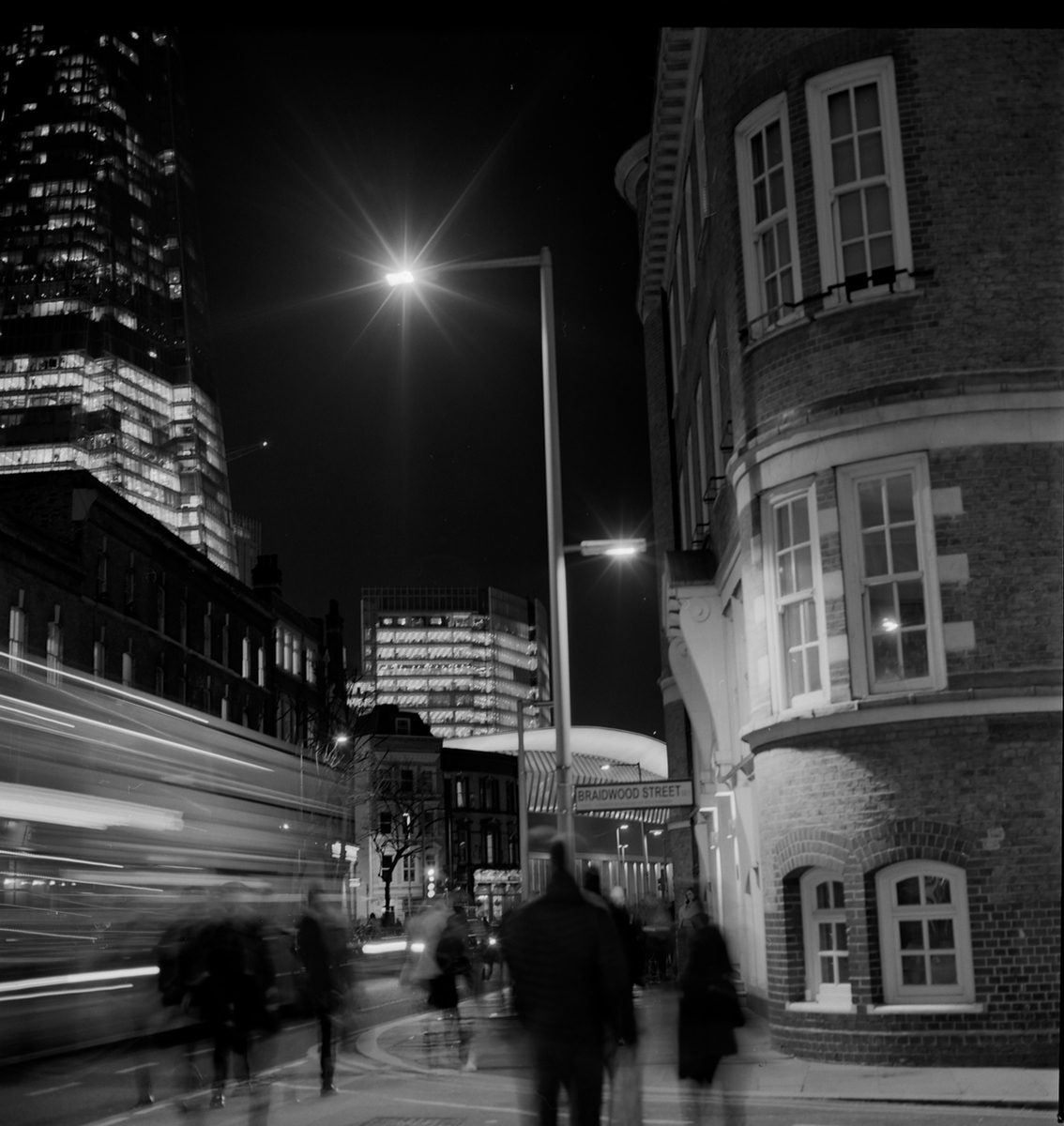
Delta 400 © Ted Smith
At that particular time, Fujifilm had recently ditched Acros and long since ditched Neopan 400, both of which I had used exclusively for some ten years previous and, although I had used ILFORD films in the past when I was younger and less skilled, I was experimenting with some other big name brands at this particular point; namely Kodak Tri-X 400 and TMAX lines.
During our photo walk near Tower Bridge I took several night-time photos, one of which I was really pleased with and subsequently submitted it to the Analogue Wonderland and Kodak Alaris’ “Low Light Magic” competition. And to my surprise, I was one of two joint winners from around 500 entries! That splendid news really kicked me into gear, and made me realise this night-time cityscape project idea could develop into a series, at least for as long as there was a requirement for me to frequent London. My thinking was, and still is, that over a period of some years I might collect quite an array of images.
- HP5 ©Ted Smith
- HP5 ©Ted Smith
Asking questions
So by mid 2019, I had decided that Kodak Tri-X 400 was a great film, but it was nagging at me that ILFORD is world famous for being “the” black and white film specialists. Sure, Kodak and Fujifilm also make a handful of amazing B&W film alongside their abundant colour stocks, but ILFORD have an entire range of black and white film to suit everyone's needs! From ISO50 to ISO3200, infrared, special effect film and everything in between.
I was seeing, more and more photos taken by other photographers such as Matt Bell using ILFORD FP4, HP5, along with all the various Delta ranges that looked astounding. The more I thought about it, and the more I read, the more I sat back and said “wait...these images are amazing and nothing like what I got years ago with ILFORD films; what do they know that I do not!?”. So I started asking questions and making enquiries to photographers like Matt and others.
Asking the community
The analogue photography scene has an increasingly busy population both globally and in the UK. I’ve seen a massive uptick just in the last couple of years compared the early and mid 2000’s when film looked like it had a very uncertain future.
I have many people I call friends in the community from Em at Emulsive.org, to Hamish Gill at 35mmc.com, people in Facebook groups such as “The Negative Positives Film Photography Podcast” group run by Mike Gutterman, and Podcast groups which I both listen to and occasionally feature as a guest in (such as the “On The Streets Photography” podcast.
So I put the question to those communities and gradually discovered that ILFORD films are specifically engineered to be shot at an EI that suits the scene and the photographers vision, and not necessarily just the box speed (whilst it is true that most films can be pushed and pulled, my point is that ILFORD films generally expect to be and developed accordingly!).
They have great latitude, and are designed to be pushed or pulled as necessary making them a prime example of a material that requires use of the right film and the right EI for the right scene for best results.
My conclusions?
And so I concluded that:
- Should you ALWAYS shoot HP5 at EI400? Not necessarily.
- If it’s a bright contrasty day, would shooting FP4 provide more pleasing results than a “contrast’ier” film such as Delta 400? Probably. And so on.
This message really stuck with me when I asked one particular featured photographer on Instagram that ILFORD had featured called Natalie Oberg who I noticed seemed to be a devout ILFORD film user (certainly very frequent ILFORD shooter). I asked her “Why do you use FP4 for some scenes and Delta 100 for others?”, and she kindly replied to explain how she uses Delta films for low contrast scenes, as it tends to boost contrast, and she uses FP4 for high contrast scenes because it is a flatter film which blends high contrast scenes better than low contrast scenes (an issue I found years ago without realising the cause).
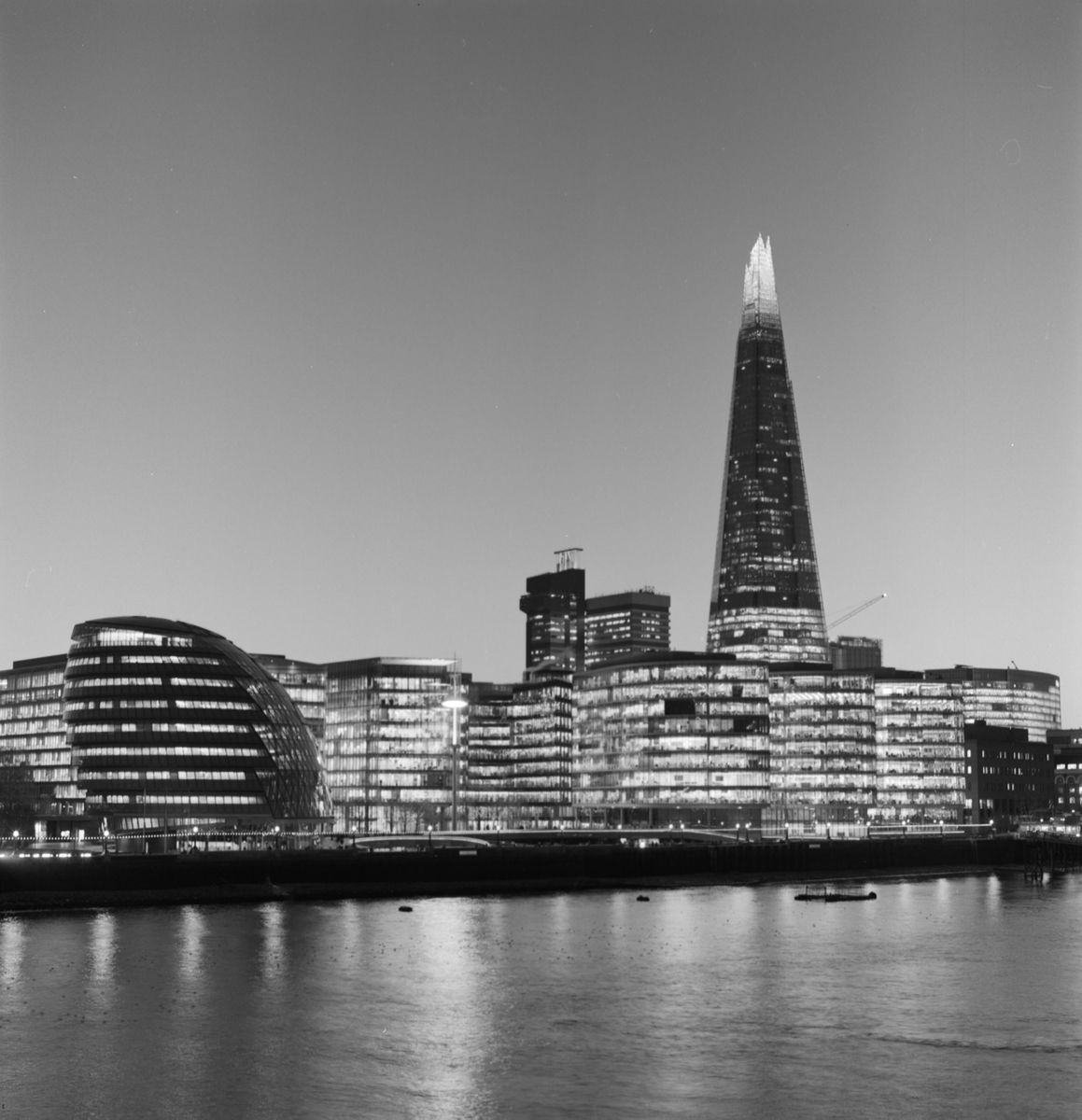
Delta 400 ©Ted Smith
Creative thinking
ILFORD have an enormous range of film that suits a myriad of scenes and specialist tasks. And whilst it is true you can use any of them at box speed for most things, they really come alive when used with careful consideration of the subject and scene.
This is exactly what I enjoy about photography; the creative thinking that results in the eventual image. The image is just the final part of it. The fun is in the thinking, the planning, the shooting, the developing, and the printing.
And so, it eventually dawned on me that ILFORD is the provider of exactly that creative capability and vision that I enjoy, and they can facilitate the entire chain from capture, to development, to print.
My analogy
The analogy I use now to explain this to people when I am asked “why don’t you just use a digital camera; it’s easier?” is this (having first used it in Mike Gutterman's podcast).
I can either collect my kids from school by car, or I can walk there and back with them on foot. By car, I can get there and back in about 30 minutes. I’ll be sat in car, then in a traffic jam, use about £0.70 of petrol and eventually we get home.
Or I can walk to the school and then walk them home; enjoy the surroundings, have a nice chat about their day, get some exercise for myself and for them, help them appreciate the outdoors with the wind in our hair, and still get home, in about 50 minutes, all the happier. OK, so it has taken me 20 minutes longer than driving, but the outcome is the same (we are all home), except the journey has been way better!
Moving to DELTA
After using HP5 quite considerably for much of 2019, and pushing it quite often, (always developing it in ILFORD DD-X). I had been getting much better results than I had in years past, I decided to go up a notch to their Pro line equivalent; ILFORD Delta 400. As a devout user of DD-X developer, and knowing that DD-X is specifically engineered for use with cubic grain film (which all the Delta lines are), I wanted to see how I might get on using that for my night-time cityscape work of London.
- Shot on HP5 ©Ted Smith
- Shot on HP5 ©Ted Smith
In early 2020, I ordered several rolls and used one of them on one of my trips to London. I was again near The Shard, Tower Bridge and Mayors Office on the south side of The River Thames. I lined my Hasselblad 501CM towards the north side of the river and repeated a similar shot to the one that got me that joint winner place with Analogue Wonderland ‘Low Light Magic’ competition 18 months earlier with Tri-X.
I shot it at EI800 this time (instead of EI1600) just to give that extra block of contrast that I like in my night-time work for about 3 or 4 seconds and I hoped for the best.
When I got home, I developed it using my steel tank and ILFORD Ilfotec DD-X for about 10 or 11 minutes. The film that came out the tank that day looked amazing. I hung it to dry, and I found it dries pretty flat too (which is another plus point!).
I scanned it first using VueScan, and then I used Darktable to do some post-processing. I was blown away! Almost all of the 12 shots were very good, with about half being “keepers”.
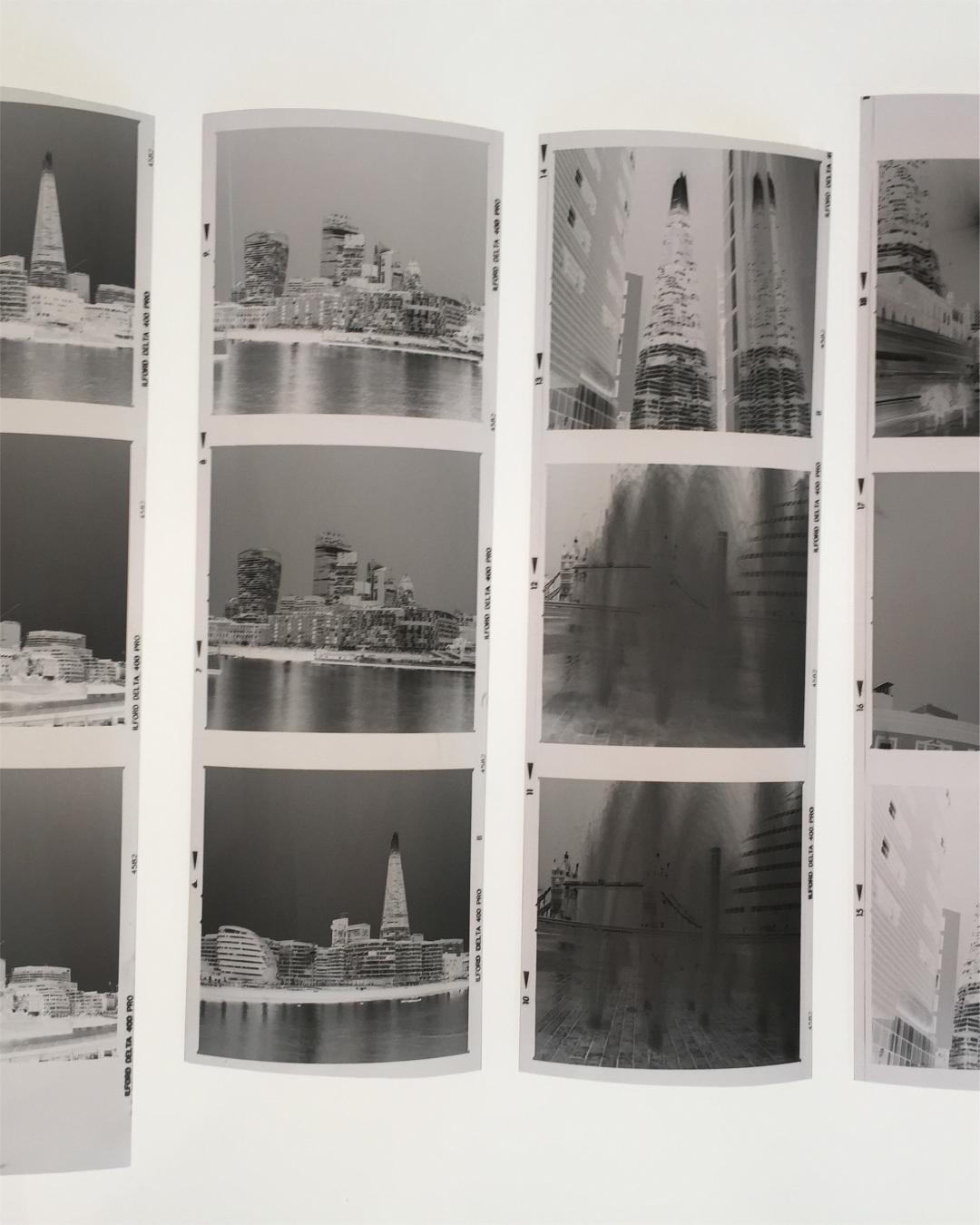
ILFORD DELTA 400 negative - ©Ted Smith
I was so excited about one of the pictures that I put the negative straight into the enlarger and made a 10x8” print. Which I subsequently sent to my friend in Canada, James Lee (of James Lee Photography), as a gift, as he has helped me out a lot over the last couple of years.
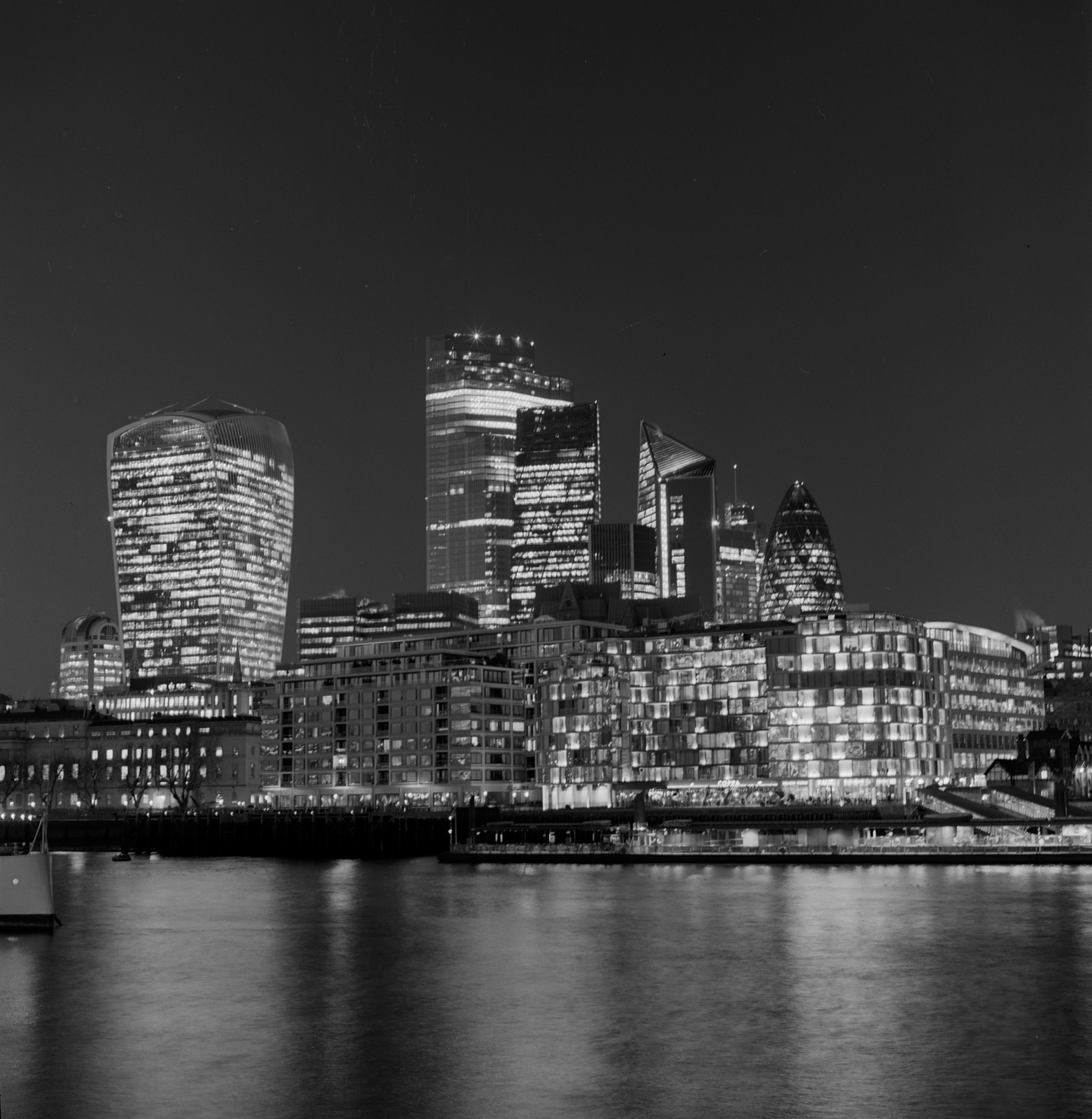
Scan of my favourite shot from the roll ©Ted Smith
Finding a keeper
Readers who know me will know that I like consistency in my workflow. I am not one to experiment with film stocks or developers for fun. The only experimentation I use is in the hope of finding “a keeper” product, that I can use reliably, always. Experimenting with Delta 400 on this day was one such example, and since then I do not see me changing because it seems to be a stunning film.
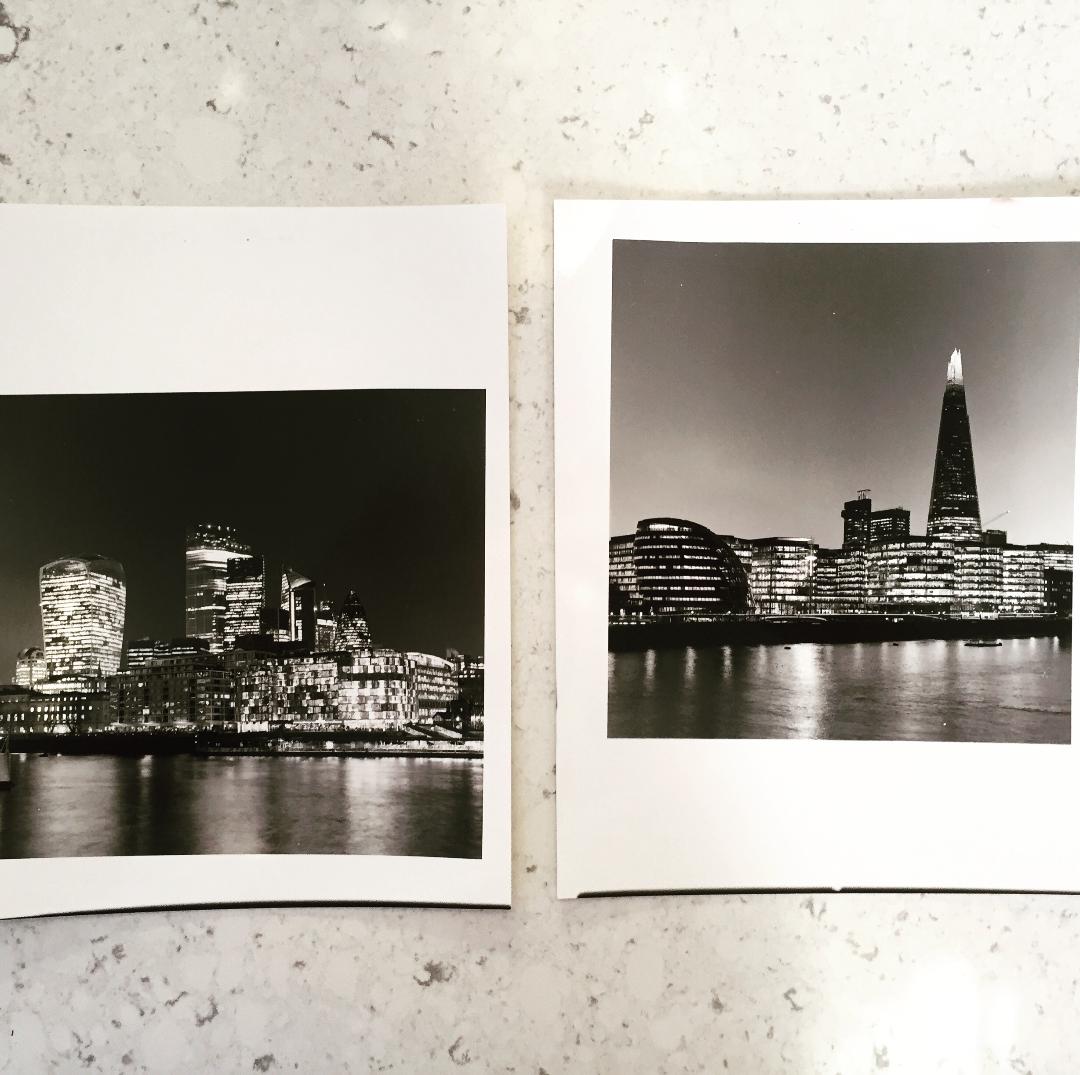
My current preferences
Sadly Coronavirus lockdown came in March 2020, and advisories against travel had started much before then. So my London shooting and cityscape experiments with Delta 400 have, for now, ceased.
During this lockdown I have also began to use ILFORD Delta 100 for bright light work and continued to use Delta 400 around the house! As I stated earlier, Acros used to be my 100 speed film of choice, and whilst I am delighted Fujifilm have re-introduced Acros II, I am now of the view that there is little between Delta 100 and Acros “of old” with how I am using it. And if there is anything between them now, I am not sure it is worth the near triple price that Acros brings to the party.
Additionally, I prefer ILFORD's clear continued commitment to film production, as they have always done for over 140 years.
And so for now my B&W film preferences are :
- Ilford Delta 100 for well-lit scenes
- Ilford Delta 400 for nighttime scenes or scenes with low contrast
- Ilford HP5 for higher contrast scenes or more general shooting
The London Series
Interested readers can read more about “The London Series” on my website and anyone who would like to buy the 12” square printed book of the series so far can do so via Magcloud. (This will help raise money for the food bank charity “The Trussell Trust”, to whom all profits are being donated. (If I sell any!)
I have continued to use ILFORD Delta 100 and 400 as part of a current isolation project called “Our Coronavirus Quarantine”. I am taking at least one photo a day of my family in our home using the Hasselblad during the UK lockdown (time of writing, April 2020). I intend to create a book from it for my kids for the future, as a positive keepsake of what is obviously a very difficult time for all of us. Readers can keep up to date with that project as it develops if they are interested via my blog.
I would like to take this opportunity to thank ILFORD Photo for their amazing, continued support of analogue shooters, and their willingness to interact with their customers both via e-mail and social media channels. It is rare these days that such large global companies afford and invest such time into every customer. Thank you.
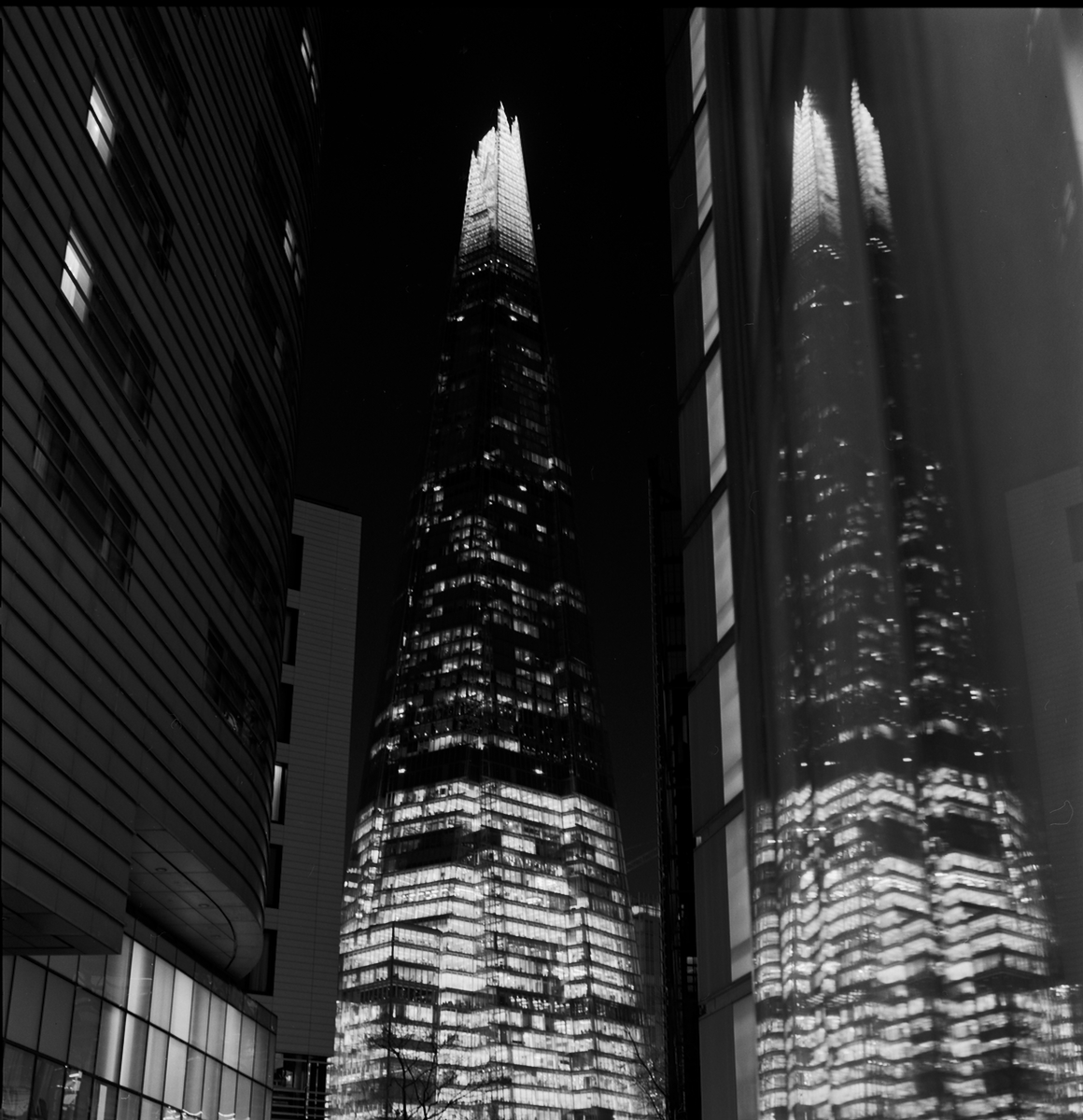
Delta 400 © Ted Smith
About The Author

Ted Smith
Ted Smith has been capturing photographs on film since the late 1980’s where he started with an Olympus OM10, which he still owns and uses. Since 2007, he might be defined as a “semi-pro” on the grounds that he occasionally earns some money for his photography and registered as “Ted Smith Photography”. He was published by World Wildlife Fund in 2010, Derbyshire Life Magazine in 2013, and was a Kodak Alaris & Analogue Wonderland contest winner in 2019. His primary expertise and joy is the photography of landscapes, people, dogs, and he has been known to shoot a destination wedding or two (and has aspirations to do more in future)!
Since 2012, his main work horses are the Hasselblad 501CM and Nikon F5 cameras.
Website : www.tedsmithphotography.co.uk
Instagram : https://www.instagram.com/tedsmith_photography/
Facebook : https://www.facebook.com/tedsmithphotography







